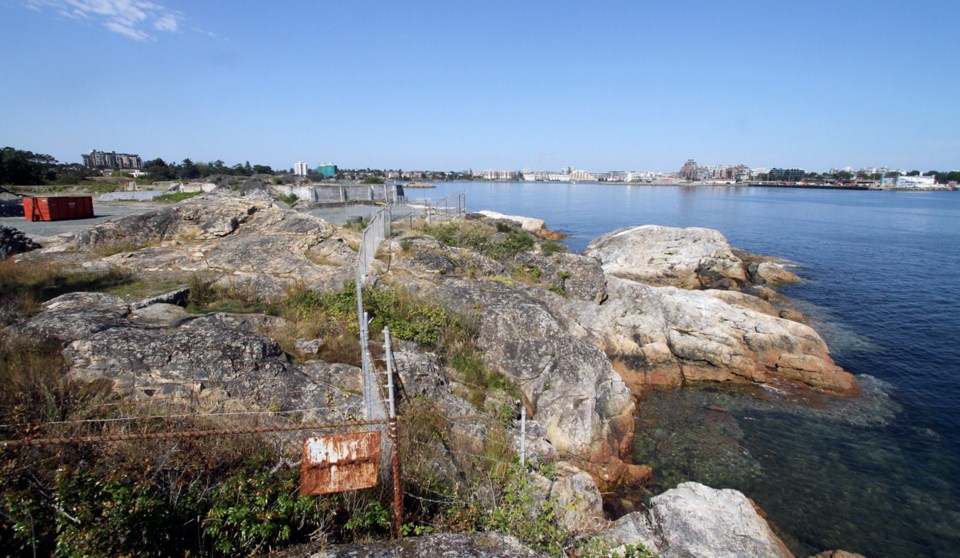Greater Victoria’s sewage treatment plant has officially gone to tender, just days before Esquimalt decides whether to approve rezoning to even allow building on the planned site.
The Capital Regional District’s civilian sewage commission, made up of unelected technical experts, issued the formal Request for Proposals for a $230-million treatment plant at McLoughlin Point in Esquimalt on Friday afternoon.
It’s the first step in the $783-million sewage project, which also includes a future biosolids facility, pump stations and piping.
The lengthy request assumes Esquimalt council will vote in favour of rezoning McLoughlin Point for a treatment plant during a planned meeting Monday.
Hundreds of angry Esquimalt residents crowded two public hearings this week to urge council to reject the proposal, or at least seek additional amenities to soften the plant’s blow to the community.
“We knew that the RFP was coming out,” said Esquimalt Mayor Barb Desjardins.
“We have no control over the actions of the CRD — particularly when they decide to release documents.
“We are disappointed that the CRD chose to release the RFPs before council had an opportunity to deal with the bylaws. They knew that council intends to deal with the bylaws on Monday.”
If Esquimalt rejects the zoning, the CRD could appeal to the provincial government to override the decision.
Commission vice-chairman Colin Smith said the Request for Proposals process will be lengthy enough to include any zoning issues or design guidelines raised by Esquimalt council.
“This is a long process,” Smith said.
“We’re already later in getting the RFP out than we’d like to be, to meet the timeline we are mandated to … at this point, unless somebody tells us the site is no longer the site, and the senior governments want to give us an extension of time to complete the project, and potentially additional budget, we are mandated to move forward in a business-like manner.”
Three consortia have already been shortlisted by the CRD to bid on the request: Capital Clear, Harbour Resource Partners and PCL Partnerships.
The CRD commission will select a winning bidder by Feb. 28, 2014, based on criteria that include operating costs, sludge costs, capital-maintenance costs and a triple bottom line.
The companies must bid using “proven technology” such as biologically aerated filter treatment, according to the document.
“If they can show us, not pie in the sky, but a plant somewhere in the world that is working at significant capacity and has for a significant period of time, they could bring that forward,” Smith said.
“We encourage them to bring that forward.”
The document also encourages innovation through resource recovery, automation, greenhouse gas reduction and other economic, social and environmental ideas.
There should be no odours in a well-designed plant, and the bidders will have to submit design mock-ups that include both the CRD and Esquimalt’s design criteria, Smith said.
“A big ugly box would not meet Esquimalt’s design guidelines and [would] not be accepted.”
The request caps plant costs at $230 million. There will be a $60-million holdback so a company has “skin in the game” until the CRD is confident the plant works through a 90-day acceptance test and a two-year performance period, Smith said.
There’s also a $20,000-a-day penalty for unexcused delays.
Smith said the request terms are standard for a sewage project of this size.



